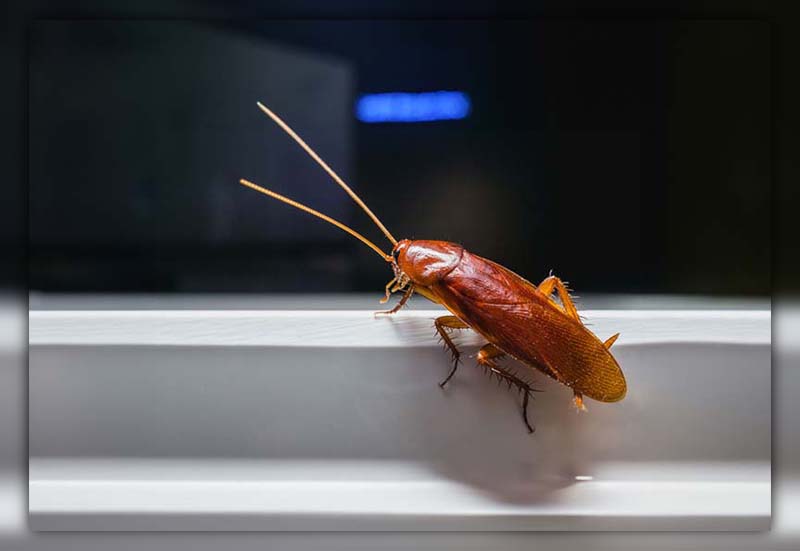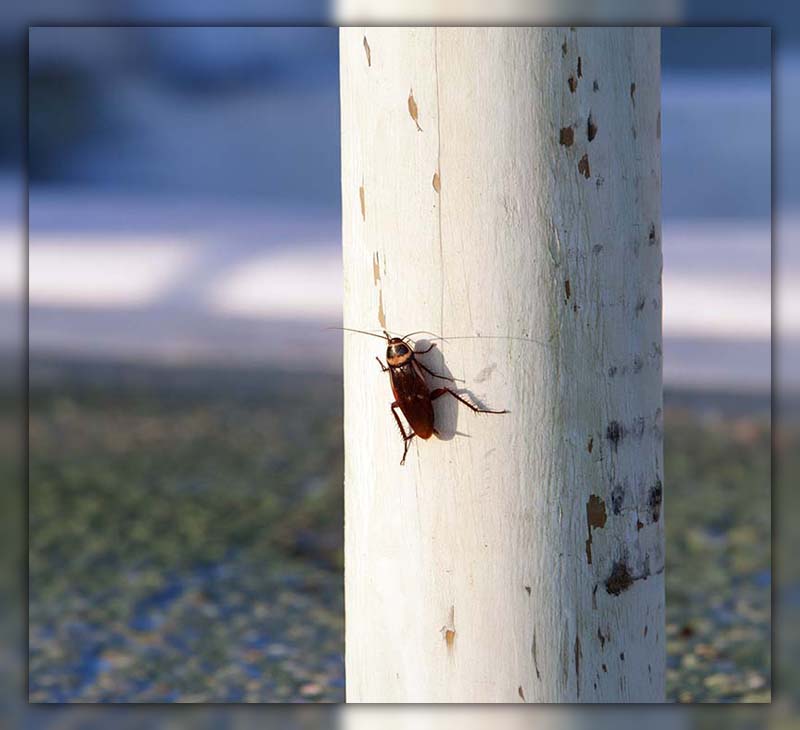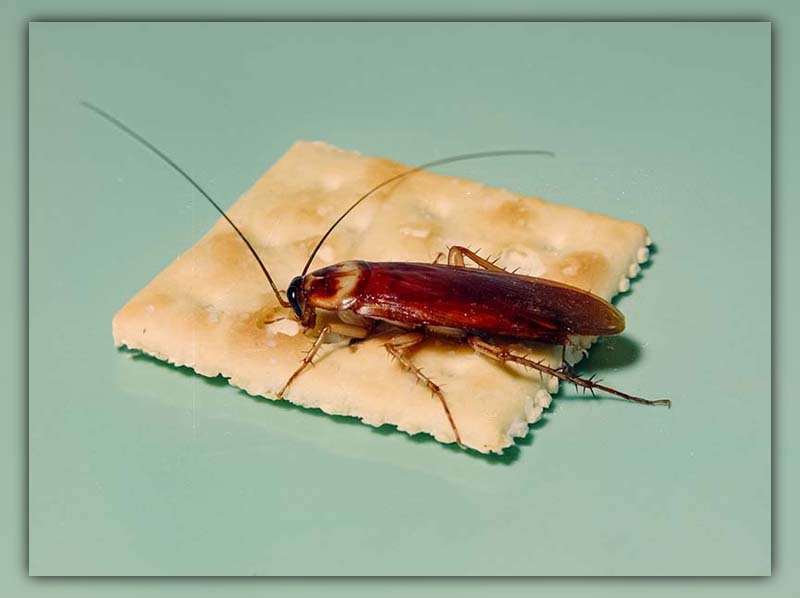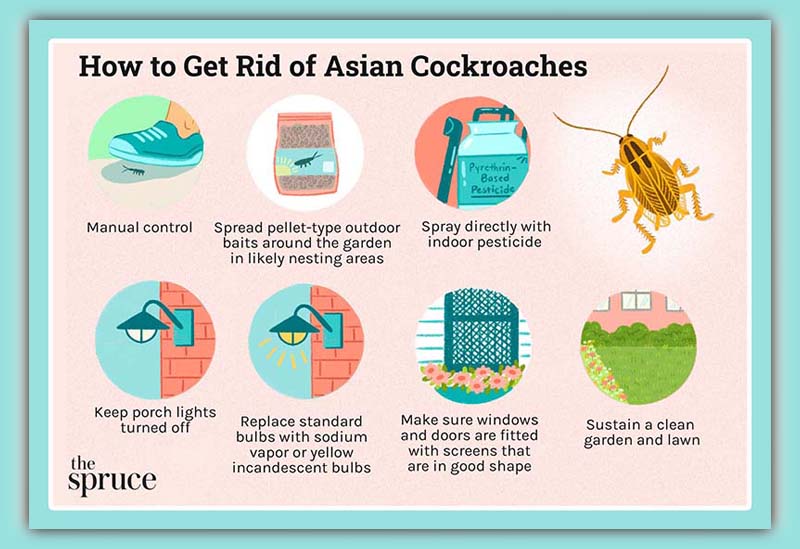From tiny nymphs to robust adults, the Asian cockroach life cycle is a testament to nature’s wonder.
Immerse yourself in this narrative, and discover the secrets behind these often misunderstood creatures.
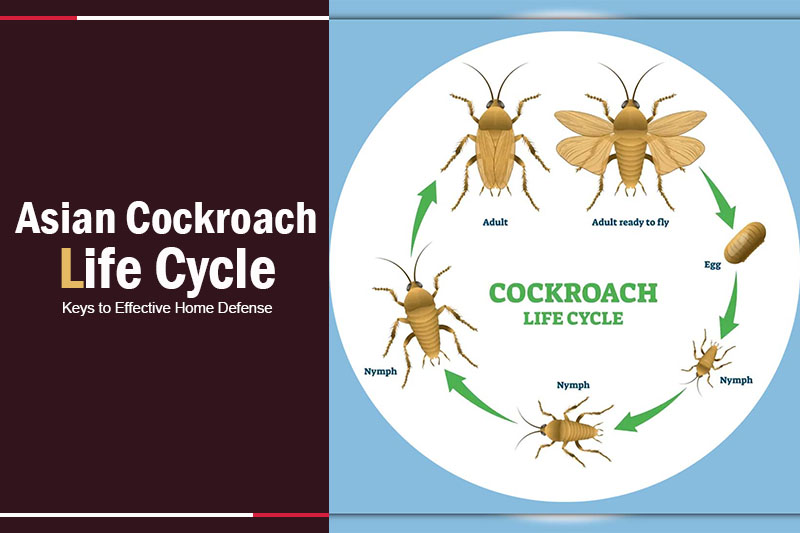
Asian Cockroach’s Life Cycle
Egg Phase
- Egg Encasements: Female Asian roaches safeguard their eggs in strong pouches called oothecae, each holding numerous eggs.
- Preferred Spots: These oothecae are cleverly tucked away in hidden nooks such as crevices, cracks, or even soil that’s close to food.
Nymph Phase
- Nymphal Phases: Before evolving into full-blown adults, Asian cockroaches experience various nymphal phases, usually spanning five to seven stages.
- Nymph Features: These young ones, often referred to as Asian cockroach nymph, are tinier and don’t sport wings, unlike their grown-up counterparts.
- Growth Essentials: Their growth journey heavily leans on factors like ample food, the right temperature, and a humid setting.
Adult Phase
- Coming of Age: Within a few months, Asian cockroaches step into adulthood and are ready for reproduction.
- Courtship: Male cockroaches woo their female counterparts with a mix of unique pheromones and captivating courtship dances.
- Living Quarters: These cockroaches have a fondness for balmy, moisture-rich surroundings, making areas like sewers and damp cellars their favorite hangouts. With their impressive climbing abilities, they can comfortably make homes indoors.
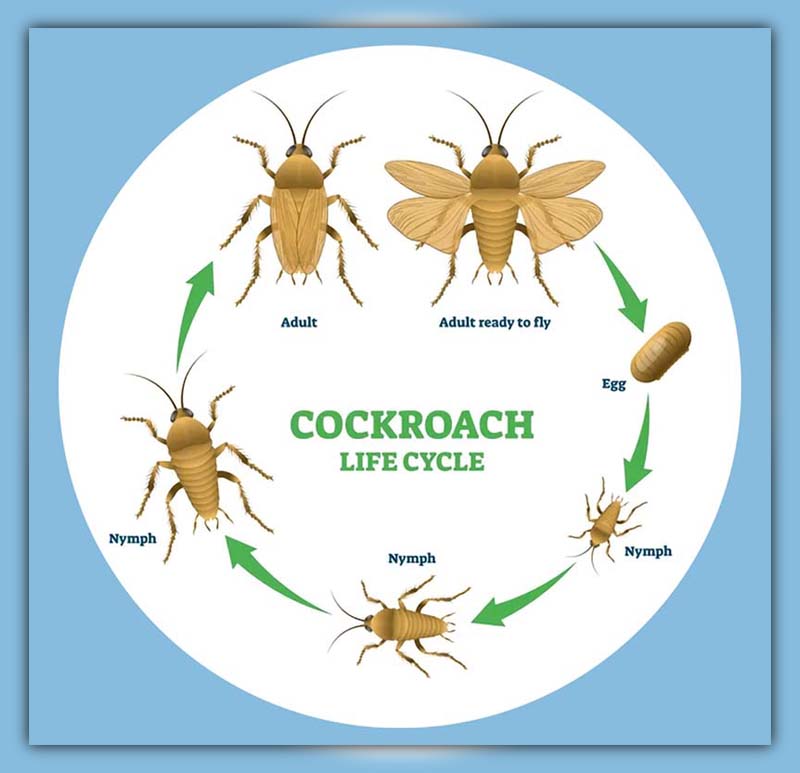
How to Recognize an Asian Cockroach
- Size: Typically, an Asian cockroach size can reach a length of up to five-eighths of an inch.
- Color: They range in shades from tan to dark brown, and you can identify them by the distinct dark stripes present behind their heads.
- Behavior: These cockroaches are quite territorial when they find a location they like. In such favorable habitats, they often become the most prevalent or sometimes even the only roach species around. Astonishingly, there have been instances of between 30,000 to a whopping 250,000 Asian roaches populating a single acre of prime land.
One of the most distinguishing behaviors of the Asian cockroach is its ability to fly. Thanks to their robust wings, they’re frequently seen taking to the air, especially when startled. An adult Asian cockroach can cover distances of up to 120 feet in one flight.
Their numbers usually swell from the onset of spring and continue throughout summer. However, come winter, their populations tend to dwindle.
Activity peaks during the twilight hours, and they exhibit a fascinating attraction to bright lights and light-colored surfaces. Don’t be surprised if they fly towards illuminated homes, often making their way in through open doors or windows.
Read more Smoky brown cockroach: Invader Insights & Home Defense
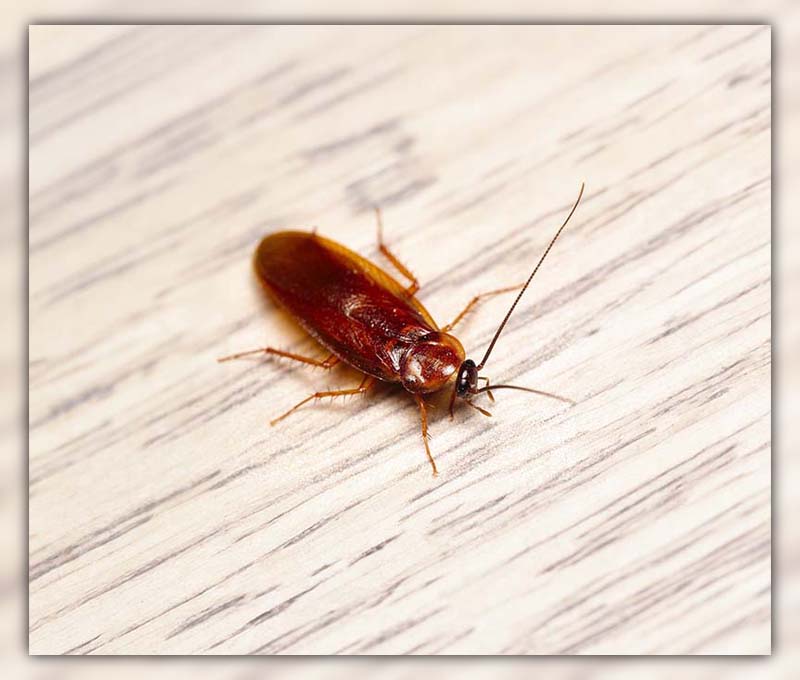
Where Can You Find Asian Cockroaches?
The U.S. first became acquainted with the Asian cockroach in 1986 when they were identified in Lakeland, Florida. It’s believed they traveled to the U.S. via imported goods from Japan.
By the time they were detected, they had already firmly established themselves and spread throughout the state. From Florida, they’ve expanded their reach, making a notable presence in numerous outdoor spots across different states.
They have a particularly strong foothold in the southern states, with Florida, Alabama, Georgia, South Carolina, and Texas being key habitats. For instance, in certain regions around Tampa, FL, it’s not uncommon to find them densely packed at a staggering 250,000 per acre!
Primarily an outdoor dweller, the Asian cockroach prefers the tranquillity of shaded zones. They have a fondness for inhabiting mulch and grassy areas where their population can easily soar into the tens of thousands.
Compost heaps are another favorite, as they relish the organic materials within.
Unlike some of their relatives, such as the German roaches, Asian cockroaches don’t frequently invade our homes. Yet, their allure to light sometimes betrays them. Drawn to its brightness, they might flutter through open entrances, gravitating towards lights or even television screens.
While they might not be as aggressive in home invasions as some other species, it’s crucial to remember that once indoors, there’s potential for their numbers to grow exponentially.
Read more German Cockroach Life Cycle: Secrets of the Pesky Pests
Do People Often Encounter Asian Cockroaches?
Asian roaches are creatures of the night, springing to life predominantly as twilight descends. They are agile fliers, easily maneuvering both outdoors and indoors. Due to their size, while they’re in flight, one might easily mistake them for moths.
This contrasts with their doppelgangers, the German roaches, who aren’t particularly adept at flying.
These roaches possess a curious affinity for light sources. They don’t just stop at buzzing around luminous objects; they’re even drawn to surfaces with light hues. Indoors, they’re known to perch on light fixtures, television screens, and even porch lights.
Their attraction to light is so pronounced that they might flit from one room to another, chasing the glow as you switch off lights in one space and illuminate another.
With the capability to cover up to 120 feet in a single flight, it’s quite a sight when a group takes off simultaneously.
If you’ve ever been gardening or mowing your lawn and inadvertently disturbed a horde, you might have been momentarily enveloped in a whirl of winged bugs. But there’s no need for alarm!
Rest assured, Asian cockroaches aren’t in the business of biting. In all likelihood, if they’re fluttering around you, it’s to escape – you represent a potential danger to them.
However, the sight of these airborne cockroaches, especially in areas where their numbers reach the thousands, can undoubtedly be an unnerving experience for many.
The Troubles Caused by Asian Cockroaches.
While Asian cockroaches may not be as notorious as some other cockroach species in terms of infesting homes, their presence is still undesirable. Their dietary habits mirror those of their roach relatives, feasting on trash, decaying matter, and other less-than-appetizing items.
This penchant for consuming unsavory materials means they often become carriers of various bacteria. If they venture into your living spaces, there’s a risk they might introduce these pathogens to your home environment.
Even when they remain outdoors, they pose a risk, as they can taint surfaces they come in contact with. This includes things we use daily, such as tools in the garage, kitchen countertops, and gardening equipment.
So, while they might seem less harmful, caution is still advised.
How to Eliminate Asian Cockroaches
Asian cockroaches present a unique challenge for control measures. Their capacity to spread over extensive terrains makes localized pesticide sprays or baits less effective.
Unlike other pests that might enter homes through cracks or gaps, these cockroaches primarily fly in, drawn by lights—particularly bright white lights and yellow incandescent bulbs. Therefore, traditional perimeter sprays prove ineffective, as there isn’t a singular point of entry to target.
For optimal control, bait in pellet form is recommended. This allows for wide distribution across outdoor spaces, encompassing gardens and lawns.
However, managing a significant infestation is not a quick fix but a sustained effort, necessitating regular bait applications and diligent observation of the cockroaches’ behavior.
Should you encounter an issue with Asian cockroaches on your premises, it’s advisable to seek expertise from a pest control specialist.
They can properly gauge the severity of the situation and determine the best course of action.
Strategies To Keep Asian Cockroaches Out Of Your Home
Keeping Asian roaches at bay primarily hinges on maintaining cleanliness in and around your home, making it less enticing to these pests. Here are some strategic steps to consider:
- Maintain Your Yard: Regularly remove damp collections of leaves and ensure your grass remains short. By eliminating these favorite hangout spots, you’re reducing the appeal for these insects.
- Be Mindful of Mulch: Studies have shown that oak leaf litter and rubber mulch are like magnets for Asian cockroaches. Opt for alternatives when choosing mulch and consistently clear leaf litter to deter them.
- Indoor Cleanliness: An immaculate interior can act as a deterrent not only for Asian cockroaches but also for other pests. Remember, while Asian roaches are more outdoor-oriented, they’re not averse to visiting interiors, especially if they’re lured by lights. The last thing you want is for them to feel welcome due to abundant food sources.
- Kitchen Hygiene: Commit to washing dishes daily and consistently wiping down counters to prevent any food residue or crumbs from lingering.
- Regularly Take Out the Trash: A full garbage bag, with its array of scents, can be a beacon for pests. Make it a routine to dispose of it promptly.
- Sweep and Vacuum: Regularly clean floors to get rid of any food particles or dirt.
- Organized Storage: Whether it’s your pantry, closets, or garage, keeping areas organized and free of clutter eliminates potential hiding spots for pests.
Remember, the dual approach of maintaining both an outdoor and indoor regimen is essential. These habits not only deter Asian cockroaches but also form a robust defense against various other pests.
FAQ
Do Asian cockroaches have wings?
Absolutely! Asian cockroaches are equipped with fully developed wings, allowing them to cover vast distances by flying. This capability aids in their rapid colonization of areas like fields and lawns.
If you’ve ever been gardening or mowing and seen a sudden flurry of them taking off, it’s due to their natural instinct to escape perceived threats. Rest assured, they’re likely more afraid of you and won’t linger.
Do Asian cockroaches fly?
Indeed, they do. Asian cockroaches are adept fliers. In contrast to German cockroaches, which seldom take to the air, or American cockroaches that primarily glide, Asian cockroaches can actively fly over distances exceeding 100 feet.
Their attraction to light often draws them indoors, where they gravitate towards light fixtures, television screens, and other luminous objects.
Do Asian cockroaches ever bite?
No, Asian cockroaches don’t have a habit of biting either humans or pets. They’re more inclined to fly away when confronted by larger creatures.
If inside your home it seems as though these flying critters are tailing you from one space to another, it’s not you they’re interested in.
They’re merely chasing the light. So, when you switch off a room’s light and turn on another, they’re likely to follow the source of brightness.
Conclusion
In our exploration of the “Asian Cockroach life cycle” we’ve uncovered its various stages and their significance in our daily environments.
Armed with this knowledge, we can better strategize against such pests. We encourage you to share your personal experiences and insights with our community.
For further insights and discoveries, continue browsing through other informative blogs on Pestweek.

Calina Mabel has over 15 years of experience in the field of journalism and communications. Currently, Calina Mabel is the Content Writer for categories such as Cockroach, Ants, Bed Bugs, Mosquito, Rodent, Termite, and Flies on Pestweek.com. She aims to build content for these categories with a focus on providing valuable and accessible information to readers, in order to create the world’s largest knowledge community about Pests.
All content written by Calina Mabel has been reviewed by Emily Carter.


